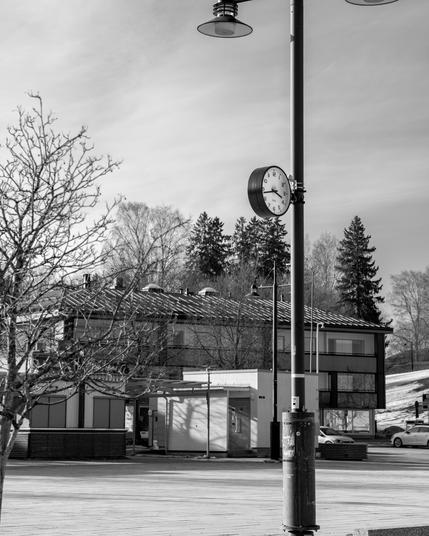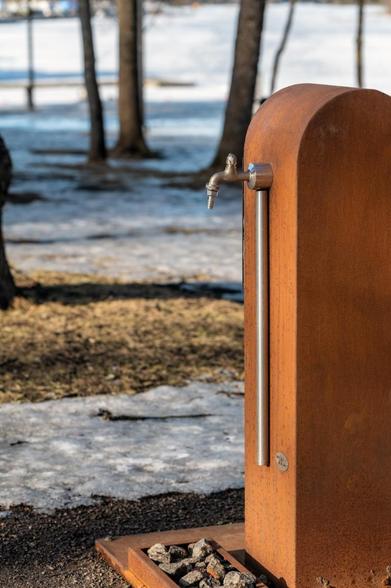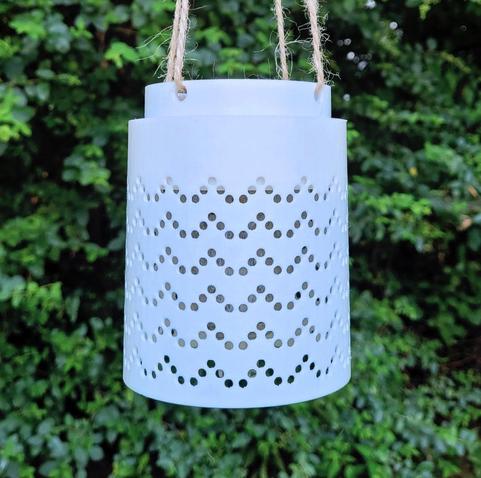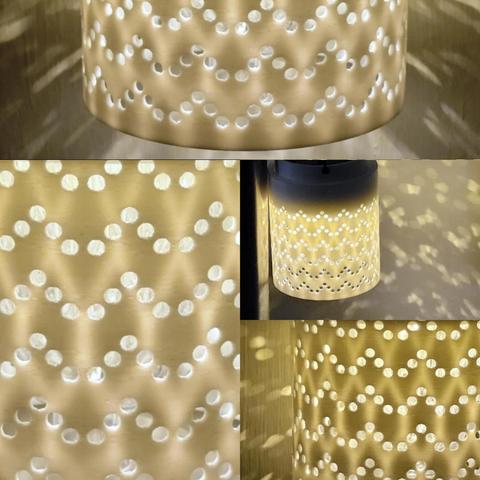Design Milk : Architectural Wood Lighting That Celebrates Wood as a Material https://design-milk.com/architectural-wood-lighting-that-celebrates-wood-as-a-material/?utm_source=rss&utm_medium=rss&utm_campaign=architectural-wood-lighting-that-celebrates-wood-as-a-material #outdoorlightingcollection #indoor/outdoorlighting #HomeFurnishings #homefurnishings #outdoorlighting #outdoorlamps #outdoorlight #woodlighting #accessories #outdoorlamp #postcompany #IdahoWood #lighting #outdoor #Main #lamp
#OutdoorLighting
Goldmedal Electricals Unveils "Ranger" – A Stylish and Powerful Portable LED Solar Filament Lamp
#AsianTalks #GoldmedalElectricals#RangerLamp #SolarLighting #LEDLamp #PortableLighting #SmartLighting #SustainableTech #SolarPowered #FilamentLamp #OutdoorLighting #EmergencyLight #HomeLighting #TechForTomorrow #InnovationInLighting #EcoFriendlyDesign #TouchSensorLamp #MadeInIndia #LightingSolutions #SmartHome #FMEG
https://theasiantalks.com/goldmedal-ranger-fast-charging-long-lasting-solar-lamp/
Goldmedal Electricals Unveils "Ranger" – A Stylish and Powerful Portable LED Solar Filament Lamp
#TycoonWorld #GoldmedalElectricals #RangerLamp #SolarLighting #LEDLamp #PortableLighting #SmartLighting #SustainableTech #SolarPowered #FilamentLamp #OutdoorLighting #EmergencyLight #HomeLighting #TechForTomorrow #InnovationInLighting #EcoFriendlyDesign #TouchSensorLamp #MadeInIndia #LightingSolutions #SmartHome #FMEG
https://tycoonworld.in/goldmedal-ranger-solar-led-filament-lamp-torch/
On Friday, 30th May, along with two of my lighting design colleagues, I'll be putting on a HalfMoon Education webinar "Residential Lighting Design: Function, Sustainability and Energy Systems". Participants can earn American Institute of Architects CE credits.
Registration & info: https://halfmoonseminars.org/product/webinars/residential-lighting-design-function-sustainability-and-energy-systems/
“Using photometric and spectroscopic sensors, we observed up to 50% night sky darkening during Earth Hour from 2011 to 2024 in Hong Kong, primarily as a result of a small but critical number of lights-out instances in central business districts, as evidenced by crowd-sourced photography records. The emission reductions mostly occurred in the 445–500, 500–540, and 615–650 nm spectral ranges---corresponding to peak emissions from LED billboard screens--- and in the 585–595 nm range, associated with metal halide floodlights used for facades and billboards. Our study identifies these sources as major contributors to urban light pollution.”
(Note: not yet peer reviewed, but the authors are legit.)
https://www.researchsquare.com/article/rs-6241967/v1
#LightPollution #Cities #LED #DarkSkies #EarthHour #Lighting #OutdoorLighting
Jane Slade has an interesting article in the current issue of the IES LD+A magazine that suggests when it comes to outdoor lighting and security, we're asking the wrong question.
"I propose that the dangerously oversimplified question 'Is more light safer?' be distilled out of our discourse in the lighting industry. When we hear this question being asked, let us actively design the discourse, redirect the question, call out how it has typically created less quality in design, and elevate the conversation with other, more open-ended and truth-seeking questions"
https://journals.sagepub.com/doi/full/10.1177/03606325251332534
#Lighting #LightPollution #DarkSkies #OutdoorLighting #Safety #Security
Street photography day.
https://www.kuvaajankulma.com/valokuvaaja
#streetphotography #bnwphotography #Monochrome
#ScenicView #NightLights #CharmingCityLights #StreetLamp #StreetPhotography #OutdoorLighting #UrbanLighting #WinterEvening #UrbanArtistry #NostalgicLighting #VintageLights #LampPost #EveningGlow #CityAesthetic #RetroVibes
Street photography day.
https://www.kuvaajankulma.com/valokuvaaja
#streetphotography #bnwphotography #Monochrome
#ScenicView #NightLights #CharmingCityLights #StreetLamp #StreetPhotography #OutdoorLighting #UrbanLighting #WinterEvening #UrbanArtistry #NostalgicLighting #VintageLights #LampPost #EveningGlow #CityAesthetic #RetroVibes
#RusticDesign #OutdoorFaucet #SeasonalChange #WinterLandscape #SnowyScenery #NaturePhotography #IcyGround #SereneNature #SimpleBeauty #WinterVibes
Street photography day.
https://www.kuvaajankulma.com/valokuvaaja
#streetphotography #bnwphotography #Monochrome
#ScenicView #NightLights #CharmingCityLights #StreetLamp #StreetPhotography #OutdoorLighting #UrbanLighting #WinterEvening #UrbanArtistry #NostalgicLighting #VintageLights #LampPost #EveningGlow #CityAesthetic #RetroVibes
#snow #Finland #OutdoorLighting #photography
Diffusive snow.
We light outdoor spaces at night for many reasons, among which is to ensure our nighttime safety and security, but there is little evidence that outdoor lighting deters crime. Quality lighting design promotes better nighttime visibility by exploiting the amazing power of human vision across a large dynamic range. Read how the "lighting for reassurance" design ethic empowers users of outdoor spaces at night by giving them confidence in the integrity of their surroundings.
http://www.darkskyconsulting.com/blog/lighting-for-reassurance
📷: Gerd Altmann
#Lighting #LightingDesign #OutdoorLighting #Visibility #Crime #PublicSafety
Leading Street Light Manufacturer in India - Brightening Your Pathways
Illuminate your streets with high-quality, energy-efficient solutions from India's trusted street light manufacturer. Our advanced designs cater to urban and rural needs, ensuring sustainability and durability.
https://www.daselectronicssolution.in/led-street-lights.html
#StreetLightManufacturer #LEDLightsIndia #StreetLightManufacturer #LEDStreetLights #LightingSolutions #EnergyEfficientLights #SmartLighting #MadeInIndia #SustainableLighting #OutdoorLighting
"There is a fundamental problem that when we design street lighting for roads we design on the principle that cars do not have headlights and that the entire road is in complete darkness and the people using the road are in complete darkness."
An @ipsos report for the national energy distribution company of France notes (en français) that "80% of elected officials surveyed have already implemented the switching off of public lighting after 10 p.m. in their municipality". (h/t @salvabara)
https://observatoire.enedis.fr/barometre
#DarkSkies #LightPollution #PublicLighting #OutdoorLighting #LightingPolicy #Europe #EU
"'It was a blow. It was a disappointment,' Heasley said. 'We had done so much work to create this international dark sky park.' He and others believe the culprit is increased outdoor use of LED lights."
In a roadway #lighting study conducted in Slovenia, "a minimum horizontal illuminance of 1.8 lx and a minimum luminance of about 0.15 cd/m2 were optimal for perceived #safety and comfort." (Pretty low numbers, well below the level at which most streets are now lit.)
Lights Out Connecticut and the Menunkatuck Audubon Society recently published this new outdoor lighting policy guidance for CT communities. (Many of the ideas it contains would work well in other U.S. states, too.)
#LightingPolicy #OutdoorLighting #LightPollution #DarkSkies #Connecticut
My recently designed "Decorative Hanging Garden Solar Light Shade" 3D print file is new on Etsy! Check it out - https://cozypixelfluff.etsy.com/listing/1761142766
#3dprinting #gardenlighting #solarlightshade #lighting #gardenlights #gardenart #gardening #cottagecore #outdoorlighting #smallbusiness #cozypixelfluff
Why #LightPollution is a solvable #environmental crisis
Excessive #OutdoorLighting is deadly to #animals and takes a toll on #HumanHealth and wellbeing, too. But when it comes to large-scale environmental problems, this one may be a relatively easy fix.
By Alissa Greenberg
Friday, April 1, 2022
"In recent decades, lightbulbs made with #LEDs arrived, a revolution in energy efficiency with seemingly little downside. After all, an #LED bulb converts some 90% of the electricity it uses into light, whereas a conventional incandescent bulb only converts about 10%. And LED bulbs are touted as lasting up to 25 times longer.
"But the physics of LEDs make them fundamentally different from incandescents. While those traditional bulbs put out warm white light made of all colors mixed together, LEDs filter blue-rich light through a specialized phosphor material, producing light that appears white to the human eye but is still more blue-intense than incandescents’ light.
"But #BlueLight is also the most disruptive to our #nighttime environment because it mimics daylight, disrupting the hormone production and sleep cycles of both animals and humans.
"#Melatonin, one of those hormones, helps the immune system destroy renegade cells dividing out of control. That can lead to other health issues, including heightened rates of #cancer. And, 'we’re not the only ones who produce melatonin,' says Mario Motta, a cardiologist and trustee of the American Medical Association. Even amoebae produce melatonin'—meaning even amoebae might be vulnerable to light at night.
"The impacts of light pollution are evident everywhere from human health to astronomy research, but they come into particular focus in the recent phenomenon of global species #dieoffs. Between 100 million and a billion birds die every year due to light pollution, according to Massachusetts IDA chapter president James Lowenthal. New York City recently dealt with a huge die-off, 'with flocks of #MigratoryBirds slamming into buildings,' says Sarah Bois, an ecologist at the island’s Linda Loring Nature Foundation and a member of Nantucket Lights. 'They’re attracted to light.' A 2015 study at New York’s 9/11 'Tribute in Light'' installation showed an increase from 500 birds within half a kilometer of the light beams before they were turned on to 15,700 just minutes after.
"The issue is a double whammy for birds because they rely on #insects for food—and those populations are plummeting, with light pollution contributing significantly to the so-called "#InsectApocalypse.” By some estimates, one third of insects attracted to light sources at night die before morning, either due to exhaustion or because they get eaten. And according to a study in Germany, the number of insects in that country alone that die after being attracted to lights can number 100 billion or more in a single summer.
"Some starve to death searching for food that should appear bluer at twilight but is lit up amber under streetlights, says insect conservationist Avalon Owens, a doctoral candidate at Tufts University. Some are thrown off by light just the way we are, because of their #CircadianRhythms. #Pollinators whose schedules are altered by artificial light miss the #flowers they’re evolutionarily paired with, if the flowers naturally close and open with the warmth of the sun. And insects that rely on circadian rhythms for their yearly development don’t hibernate in time for winter and freeze to death.
"On #Nantucket, these phenomena are of particular concern because the island is home to a remarkably healthy population of northern long-eared #bats, which are endangered. Like many birds, the bats rely on insects for food and are easily dazzled by light, putting them in increasing jeopardy. Jack Dubinsky, director of the Maria Mitchell Aquarium on Nantucket, says he’s concerned that adding increasingly lit-up nights to the challenges of #ClimateChange, water quality, and #ecosystem collapse could put huge pressure on some already struggling species. 'The more curveballs we throw, the less likely they’ll be able to find their way,' he says.
Read more:
https://www.pbs.org/wgbh/nova/article/light-pollution-led-nantucket-solutions/
“The darker your yard, the more likely #fireflies are to flock to it.” (via @washingtonpost)
https://www.washingtonpost.com/home/2024/05/23/advice-attract-fireflies-to-yard/





